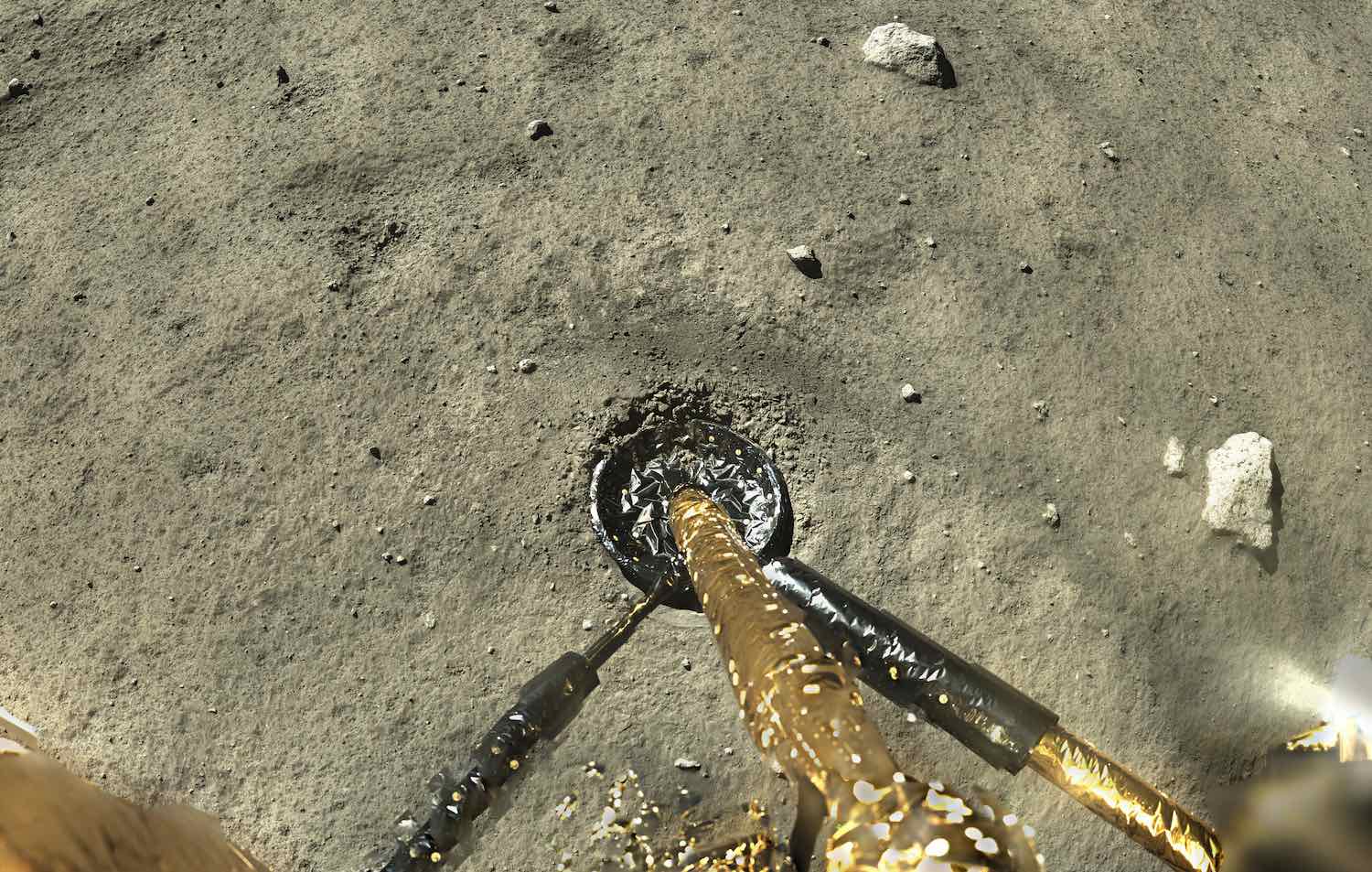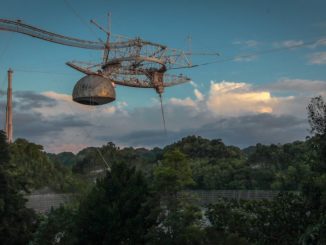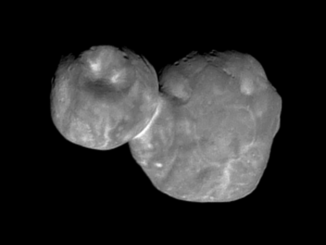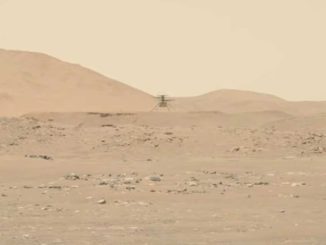
Chinese officials said the Chang’e 5 mission finished drilling and scooping samples from a lunar lava plain late Wednesday, hours before the spacecraft’s robotic ascender was due to take off from the moon to begin the trip back to Earth.
The milestone signaled the start of the mission’s return voyage, which includes an ambitious series of automated maneuvers to blast off from the lunar surface Thursday and rendezvous with an orbiter circling the moon. Chang’e 5 will attempt the first-ever docking between two robotic spacecraft in lunar orbit, then transfer the moon rock container into the return craft.
If all goes according to plan, Chang’e 5’s sample container should re-enter Earth’s atmosphere and parachute to a landing in China’s Inner Mongolia region around Dec. 16.
Chang’e 5 completed its sample collection work on the moon around 9 a.m. EST (1400 GMT) Wednesday, according to the China National Space Administration.
The lander touched down at 10:11 a.m. EST (1511 GMT) Tuesday in the moon’s Oceanus Procellarum, or Ocean of Storms, region in the northern hemisphere of the near side of the moon, east of a volcanic plateau named Mons Rümker.
CNSA said the lander deployed solar panels and a communications antenna after landing, then activated a panoramic camera, an instrument to analyze lunar soil structure, and a mineral spectrum analyzer to survey the alien landscape surrounding the spacecraft.
Chinese officials said the Chang’e 5 mission finished drilling and scooping samples from a lunar lava plain late Wednesday, hours before the spacecraft’s robotic ascender was due to take off from the moon to begin the trip back to Earth.
Full story: https://t.co/ssrWeXFwbU pic.twitter.com/6iqwyQVNdo
— Spaceflight Now (@SpaceflightNow) December 3, 2020
Data from the science instruments will provide a reference for scientists as they study the samples brought back by Chang’e 5, CNSA said in a statement.
The Chang’e 5 spacecraft completed the first phase of sample collection operations at 3:53 p.m. EST (2053 GMT) Tuesday, when officials said the lander finished drilling underground rock specimens and sealed the material inside a return carrier.
The next step in the mission’s two-day lunar stay involved using a scoop at the end of a robotic arm to gather material from the lunar surface. CNSA said the 19-hour sampling activity ended late Wednesday, Beijing time.
The spacecraft packaged and sealed the lunar material in a storage device carried by the Chang’e 5 ascender, which is scheduled to take off from the moon Thursday, using the mission’s descent stage as a launch pad.

CNSA also released a high-resolution panoramic image captured by a camera on-board Chang’e 5. The image shows one of the lander’s legs embedded in loose soil on the moon, a handful of rocks sitting on the surface, and a distant cluster of hills on the lunar horizon.
The Chang’e 5 mission’s goal was to collect more than 4 pounds, or 2 kilograms, of rocks for return to Earth. Chinese officials have not released an estimate of how much material the spacecraft gathered on the moon.
If successful, Chang’e 5 will become the first mission to retrieve material from the moon and bring it back to Earth since the Soviet Union’s Luna 24 mission in 1976.
Chang’e 5 launched Nov. 23 and entered orbit around the moon Nov. 28 before the lander detached from the mission’s orbiter and return module to begin descent maneuvers.
The successful landing of Chang’e 5 on Tuesday marked the third time China has soft-landed a spacecraft on the moon, following the Chang’e 3 mission in 2013 and Chang’e 4 in 2019. Chang’e 4 became the first spacecraft to achieve a soft landing on the far side of the moon, a feat enabled by the placement of a purpose-built Chinese data relay satellite in deep space.
Chang’e 3 and Chang’e 4 carried rovers to serve as mobile scouts exploring the lunar landscape. Chang’e 5’s mission on the lunar surface has no mobile rover, and the craft is designed to complete its work in two days while in sunlight, rather than surviving the two-week super-cold lunar night.
Clive Neal, a lunar scientist at the University of Notre Dame, said China had proven it can land on the moon with previous missions.
“But then they have to collect the sample,” Neal said in an interview shortly after Chang’e 5’s launch. “The interesting thing is they launch from the moon, get into lunar orbit, and then rendezvous with the Earth re-entry vehicle that will bring that sample back to Earth safely and uncompromised. When the Soviets did it in 1976, the last time, it was direct to Earth. They launched from the moon and came straight back to Earth. This one has an extra step in there, which has to go well in order for the sample to actually make it back.
“But given the capability they’ve demonstrated with doing things for the first time, such as the far side landing and roving, I expect things to be successful, and hope they are,” Neal said in an interview with Spaceflight Now.

“We have never done a whole process of taking and sealing samples,” said Peng Jing, deputy chief designer of the Chang’e 5 mission at the China Academy of Space Technology, in an interview aired on China’s state-run CCTV television channel. “This part of the work mainly depends on several complicated structures including the drill … the robotic arms used to scoop up rocks and regolith on the lunar surface, and actually a high vacuum sealing device designed to ensure that the sample can remain in its intact status.”
Scientists want to make sure the lunar specimens are sealed for the return to Earth to avoid contamination.
Another challenge will be Chang’e 5’s launch from the lunar surface, the first takeoff from the moon since the 1970s. The ascent module must launch on a precise trajectory to rendezvous with the return module in lunar orbit, and ground teams did not know the lander’s exact orientation on the moon’s surface until after touchdown.
“We need to precisely anticipate the location and speed of the two spacecraft flying (in) lunar orbit,” Peng told CCTV. “Because the probes don’t match in size — our ascender weighs just around 300 to 400 kilograms (660 to 880 pounds) during docking, while the (orbiter) weighs nearly 2,000 kilograms (4,400 pounds). Any error could knock off the smaller spacecraft, and that would make the docking job much more difficult than before.”
After transferring the samples to the Earth return spacecraft, Chang’e 5 will fire engines to break out of lunar orbit and head for home.
The return carrier will re-enter the atmosphere at some 25,000 mph, or 40,000 kilometers per hour, significantly faster than a re-enter from low Earth orbit.
Nine missions have returned moon samples to Earth, including NASA’s six Apollo missions with astronauts, and three robotic Luna spacecraft launched by the Soviet Union. NASA’s Apollo missions brought back 842 pounds (382 kilograms) of rocks from the moon.
There is evidence that rocks in Chang’e 5’s landing zone are much younger than those returned by the Apollo astronauts. Those specimens are some 3.5 billion years old, created during a period of active volcanism in the first billion years of the moon’s existence.
Lava plains to the east of Mons Rümker appear to be less battered by asteroid impacts, suggesting rocks there could be less than 2 billion years old. But models of the moon’s evolution suggest its internal heating should have diminished by that time, rendering volcanoes extinct, Neal said.
“It will be exciting to look at the age of these samples coming back and also the actual compositions of them,” Neal said.
“We haven’t returned samples form the moon in 44 years, since Luna 24, a long time ago,” said James Head, a planetary scientist at Brown University, in an interview broadcast on China’s CGTN television network. “The best way to learn about the moon is by returning samples. That’s true for any planetary body because we can do analyses in the lab that are far superior than what we can do remotely or in situ.”
“Chinese scientists have said that samples from different ages are needed to form a complete picture of the moon,” Peng said. “Through analysis, they think the samples we will collect from the northwest region of Oceanus Procellarum are relatively young. By combining those samples with the previous ones, we will have a better understanding of the moon’s formation and evolution.”
Email the author.
Follow Stephen Clark on Twitter: @StephenClark1.



